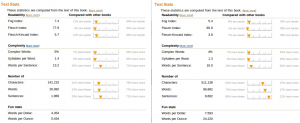Two studies on toponyms in literary texts
Two studies centering on visualization of place names in literary texts are introduced. Research on toponym extraction is discussed and in an interdisciplinary perspective: Distant reading and digital literary studies are not mere numeric accounts.
more ...